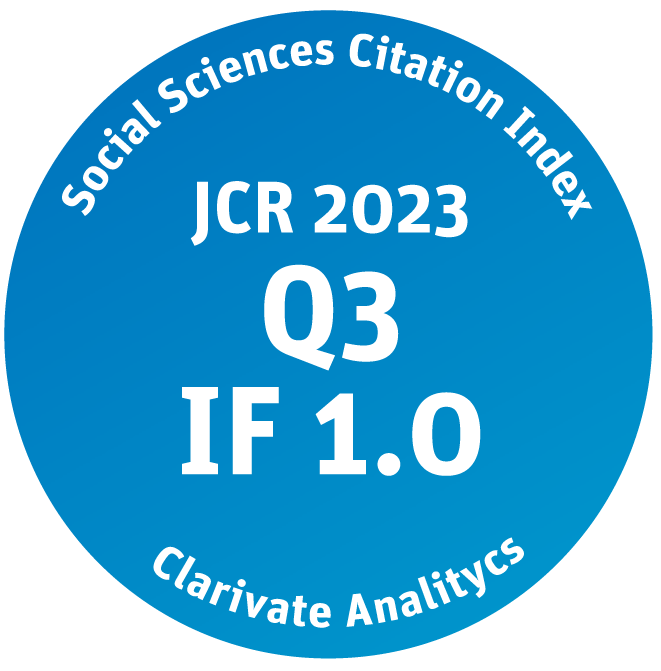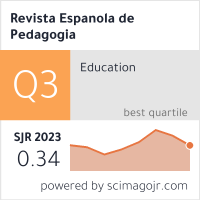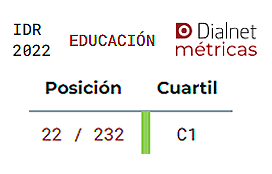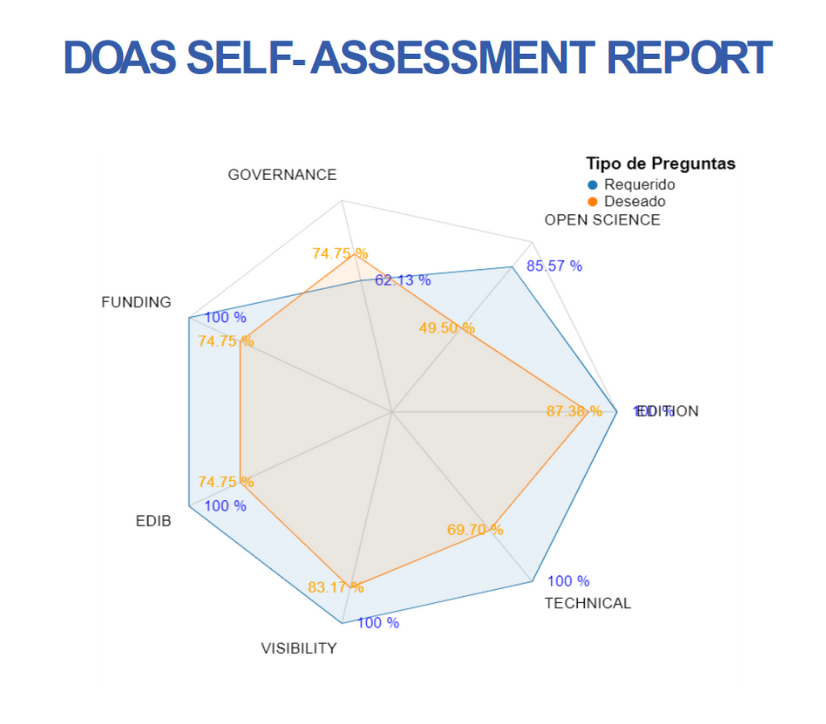DOI
10.22550/REP81-3-2023-04
Abstract
Apps that help art teachers work on areas relating directly to artistic competences are a valuable digital teaching resource. In this study we call them art apps. Aims: To validate a measurement instrument for digital applications based on the results we obtained in the first design phase, and to modify the items and identify factors. Methodology: We carried out three processes in this second phase. An exploratory factorial analysis, a pre-confirmatory analysis, and a confirmatory factorial analysis adjusted by the global or absolute fit indices for all of the scales of the test. This was based on an evaluation battery comprising 98 items distributed in three dimensions and four scales: artistic dimension (expressive and perceptive domain), technical dimension, and pedagogical dimension. Results: We obtained a definitive model of all the scales with optimal values in all the adjustment indicators. Discussion/Conclusion: After completing this process, we designed the definitive test based on the results of the fitting. Taking into account the resulting number of items (74), the number of factors (8), and the wording of each one, we consider it to be a useful and viable tool for evaluating art apps by connecting their artistic, technical, and pedagogical dimensions according to the needs and possibilities of the educational activities.
Please, cite this article as follows: Ordoñez Fernández, F. F., Caeiro Rodríguez, M., Barbero Franco, A. M., Martínez Oña, M. M., & Torres Pérez, A. (2021). Validación de un instrumento de evaluación de apps de arte que permiten desarrollar la competencia artística en entornos digitales | Validation of an instrument to evaluate art apps that enable the development of artistic skills in digital settings. Revista Española de Pedagogía, 79 (280), 515-536. 10.22550/REP79-3-2021-02
Referencias | References
Aiello, M., & Willem, C. (2004). El Blended Learning como práctica transformadora [Blended Learning as a transformative practice]. PixelBit. Revista de Medios y Educación, 23, 21-26. https://recyt.fecyt.es/index.php/pixel/article/ download/61238/37252
Aiken, L. (2003). Test psicológicos y evaluación [Psychological testing and assessment]. Pearson Education.
Bajardi, A. (2015). B-Learning y arte contemporáneo en educación artística: Construyendo identidades personales y profesionales [B-Learand contemporary art in art education: Building personal and professional identities] [Doctoral dissertation, Universidad de Granada]. DIGIBUG: Institutional repository of the Universidad de Granada. http://hdl.handle. net/10481/41757
Bentler, P. M., & Bonett, D. G. (1980). Significance tests and goodness of fit in the analysis of covariance structures. Psychological Bulletin, 88, 588-606.
Bentrop, S. M. (2014). Creating an educational app rubric for teachers of students who are deaf and hard of hearing (Publication No. 680) [Doctoral dissertation, Washington University School of Medicine in St. Louis]. Digital Commons@ Becker.
Bouck, E. C., Satsangi, R., & Flanagan, S. (2016). Focus on inclusive education: Evaluating apps for students with disabilities: Supporting academic access and success. Childhood Education, 92 (4), 324- 328.
Burbules, N. (2014). El aprendizaje ubicuo: nuevos contextos, nuevos procesos [Ubiquitous learn-ing: New contexts, new processes]. Revista Entramados-Educación y sociedad, 1, 131-135. https://bit.ly/2lHdSE1
Caeiro Rodríguez, M. (2015). Tecnopatías de la educación artística. Reflexiones en torno a la enseñanza y aprendizaje digital del arte [Technopathologies of art education. Reflections on digital art teaching and learning]. In J. A. Ibáñez Martín & J. L. Fuentes (Eds.), Aprendizaje Ético-Cívico en Entornos Virtuales: Simposio Internacional de Filosofía de la Educación (pp. 11-26). Biblioteca ONLINE.
Caeiro Rodríguez, M. (2020). Arts and Apps: aplicaciones digitales y educación artística. Tres instrumentos para trabajar con Apps de Arte [Arts and Apps: digital applications and arts education. Three tools for working with Arts Apps]. In E. Sánchez Rivas, E. Colomo Magaña, J. Ruiz Palmero, & Sánchez Rodríguez (Eds.), Tecnologías educativas y estrategias didácticas (pp. 210-225). UMA Editorial. https:// hdl.handle.net/10630/20345
Caeiro Rodríguez, M., & Navarrete, C. (2020). Experiencias B-learning con Apps de Arte en la asignatura de Educación Plástica, Visual y Audiovisual: logotipo y stopmotion como armas de construcción masiva [B-learning experiences with Art Apps in the subject of Plastic, Visual and Audiovisual Education: Logo and stopmotion as weapons of mass construction]. REIDOCREA, 9, 107-120. https://www.ugr.es/~reidocrea/9-9.pdf
Caeiro Rodríguez, M., Ordóñez, F. F., Callejón, M. D., & Castro-León, E. (2020). Diseño de un instrumento de evaluación de aplicaciones digitales (apps) que permiten desarrollar la competencia artística [Design of an evaluation instrument for digital applications (apps) that allow the development of artistic competence]. Pixel-Bit. Revista de Medios y Educación, 58, 7-25. 10.12795/pixelbit.74071
Camilleri, A., & Camilleri, M. (2019). Mobile Learning via Educational Apps: An Interpretative Study. ICETT 2019, 88-92. https://dl.acm.org/ doi/pdf/10.1145/3337682.3337687
Campo-Arias, A., & Oviedo, H. C. (2008). Propiedades psicométricas de una Escala: La Consistencia interna. Revista de Salud Pública, 10 (5), 831-839.
Cherner, T., Dix, J., & Lee, C. (2014). Cleaning up that mess: A framework for classifying educational apps. Contemporary Issues in Technology and Teacher Education, 14 (2). http://bit. ly/2VEiwQW
Del-Moral, M. E., Bellver, M. C., &. Guzmán-Duque, A. P. (2019). Evaluación de la potencialidad creativa de aplicaciones móviles creadoras de relatos digitales para Educación Primaria [Evaluation of the creative potential of mobile applications for digital storytelling in Primary
School Education]. Ocnos, 18 (1), 7-20. https:// doi.org/10.18239/ocnos_2019.18.1.1866
DiStefano, C., Liu, J., Jiang, N., & Shi, D. (2018). Examination of the weighted root mean square residual: Evidence for trustworthiness? Structural Equation Modeling, 25 (3), 453-466.
Escaño González, C. (2010). Hacia una educación artística 4.0. [Towards an Art Education 4.0.]. Revista Arte, Individuo y Sociedad, 2 (1), 135- 144. https://bit.ly/2kCVtb1
Escobar-Pérez, J., & Cuervo-Martínez, A. (2008). Validez de contenido y juicio de expertos: una aproximación a su utilización [Content validity and expert assessment: An approach to their use]. Avances en Medición, 6, 27-36.
Fernández-Cruz, F. J., Fernández-Díaz, M. J., & Rodríguez-Mantilla, J. M. (2018). Diseño y validación de un instrumento de medida del perfil de formación docente en tecnologías de la información y comunicación | Design and validation of an instrument to measure teacher training profiles in information and communication technologies. revista española de pedagogía, 76 (270), 247-270.
Ferrando, P. J., & Lorenzo-Seva, U. (2016). A note on improving EAP trait estimation in oblique factor-analytic and item response theory models. Psicologica, 37, 235-247.
Fombona Cadavieco, J., Pascual Sevillano, M. A., & Vázquez-Cano, E. (2020). M-Learning en niveles iniciales, rasgos didácticos de las APPS educativas [M-Learning in initial levels, didactic features of educational APPS]. Campus Virtuales, 9 (1), 17-27. http://hdl.handle. net/10272/17786
García de Rozas, A. M. (2017). La educación artística a través de las nuevas tecnologías: El uso de la tablet [Arts Education through new technologies: The use of the tablet] [Final degree thesis, Universidad de Valladolid]. Document repository of the Universidad de Valladolid. http:// uvadoc.uva.es/handle/10324/26415
García-Umaña, A., & Córdoba, E. (2020). Validación de la escala MPPUS-A sobre el uso problemático del smartphone [Validation of scale MPPUS-A on the problematic use of the smartphone]. Pixel-Bit. Revista de Medios y Educación, 57, 173-189. https://doi. org/10.12795/pixelbit.2020.i57.07
Giráldez, A. (2013). Enseñar artes en un mundo digital: diez propuestas para la formación del profesorado [Teaching the arts in a digital world: Ten proposals for teacher education]. Belo Horizonte, 3 (5), 85-104.
Hart, A. (2001). La educación artística y la educación de los medios en la era digital [Arts education and media education in the digital age]. Revista Comunicar, 8 (16), 149-160. https://bit. ly/35s7iEY
Hernández Ramírez, J. (2014). Instrumento para la valoración preliminar del uso de las APPs en educación primaria [Instrument for the preliminary assessment of the use of apps in primary education]. In J. J. Maquilón Sánchez, A. Escarbajal Frutos, & R. Nortes Martínez-Artero (Eds.), Vivencias innovadoras en las aulas de primaria (pp. 273-286). Universidad de Murcia.
IBM (2016). SPSS (v. 24) [Computer software].
Iglesias, L. (2012). Mobile ART: apps móviles en el contexto artístico [Mobile ART: Mobile apps in an artistic context]. Blog Mobile Art. https:// bit.ly/2lD3f4Z
Iglesias Antón, E. (2015). Nuevas tecnologías y medios en el proceso de creación fotográfica contemporánea. La fotografía móvil y las apps de autor [New technologies and media in the process of contemporary photographic creation. Mobile photography and author apps] [Final degree thesis, Universidad Pompeu Fabra]. Digital repository of Universidad Pompeu Fabra. http://hdl.handle.net/10230/25223
JASP Team (2019). JASP (Version. 0.11.1) [Computer software]. https://jasp-stats.org/download/
Jöreskog, K. G., & Sörbon, D. (1986). LISREL: Análysis of Linear Structural Relationships by The Mettod of Maximun Likelihood. Mooresville, IN Scientific Software.
Kortabitarte, A., Ibáñez-Etxeberria, A., Luna, U., Vicent, N., Gillate, I., Molero, B., & Kintana, J. (2017). Dimensiones para la evaluación de aprendizajes en apps sobre patrimonio [Dimensions for learning assessment in heritage apps]. Pulso. Revista de educación, 40, 17-33. https:// bit.ly/2k83mVM
Lee, C. Y., & Cherner, T. (2015). A comprehensive evaluation rubric for assessing instructional apps. Journal of Information Technology Education: Research, 14, 21-53. http://bit. ly/2ph5xIS
Lee, J. S., & Kim, S. W. (2015). Validation of a tool evaluating educational apps for smart education. Journal of Educational Computing Research, 52 (3), 435-450. https://doi. org/10.1177/0735633115571923
Li, C. (2016). Confirmatory factor analysis with ordinal data: Comparing robust maximum likelihood and diagonally weighted least squares. Behavior Res, 48, 936-949.
Lloret, S., Ferreres, A., Hernández, A., & Tomás, I. (2017). The exploratory factor analysis of items: guided analysis based on empirical data and software. Anales de Psicología, 33 (2), 417- 432.
López Benito, V. (2013). ¿Educar en el arte mediante apps? Los museos de arte y el uso de aplicaciones móviles en el contexto español [Art education through apps? Art museums and the use of mobile applications in the Spanish context]. Her&Mus: Heritage & Museography, 69-74.
Lorenzo-Seva, U., & Ferrando, P. J. (2013). FACTOR 9.2. A comprehensive program for fitting exploratory and semiconfirmatory factor analysis and IRT models. Applied Psychological Measurement, 37, 497-498.
Lorenzo-Seva, U., & Ferrando, P. J. (2018). FACTOR Unrestricted Factor Análysis, v. 10.9.02: A computer program to fit the exploratory factor analysis model. University Rovira y Virgili.
Lorenzo-Seva, U., & Van Ginkel, J. R. (2016). Multiple imputation of missing values in exploratory factor analysis of multidimensional scales: estimating latent trait scores. Anales de Psicología, 32, 596-608.
Luna, Ú., Etxeberria, Á. I., & Kortabitarte, A. (2019). Herramientas digitales innovadoras en espacios educativos. El uso de las apps para la enseñanza-aprendizaje del patrimonio en España [Innovative digital tools in educational spaces. The use of apps for heritage teaching-learning in Spain]. In J. Calvillo Barrios (Coord.), Escenarios, heterogeneidad y nuevas perspectivas para comprensión de la educación (pp. 90-106). Universidad Estatal de Oriente.
Malone, M., & Peterson, M. (2013). Is there an app for that? Developing an evaluation rubric for apps for use with adults with special needs. The Journal of BSN Honors Research, 6 (1), 38-56.
Marín García, T. (2011). Experiencia de innovación docente GOUMH: aprendizaje colaborativo en Bellas Artes con APPS de Google [Teaching innovation experience GOUMH: Collaborative learning in Fine Arts with Google APPS]. In Congreso Internacional de Innovación Docente (pp. 1845-1859). Universidad Politécnica de Cartagena. http://hdl.handle.net/10317/2270
Martín Ezama, P. (2016). El contenido digital y transmedia de los museos: webs, apps y dispositivos. Estudio descriptivo de la situación actual de las herramientas y plataformas de distribución de contenido digital de los principales museos de arte de titularidad pública de España [Digital and transmedia content in museums: Websites, apps and devices. Descriptive study of the current situation of the digital content distribution tools and platforms of the main publicly owned art museums in Spain] [Master’s thesis, Universidad Nacional de Educación a Distancia]. Repositorio Institucional de la Universidad Nacional de Educación a Distancia. https://bit.ly/3pUZncA
Montaño Armendaríz, M. A. (2014). Modelo de desarrollo económico local para la diversificación de la estructura productiva y la articulación del tejido empresarial en baja California Sur [Local economic development model for the diversification of the productive structure and the articulation of the business fabric in Baja California Sur] [Doctoral dissertation, Universidad Autónoma de Baja California]. Eumed.net. https://bit.ly/3xkG136
Mora Castro, D. M. (2018). Las aplicaciones móviles apps en el desarrollo de la expresión artística de los niños [Mobile applications apps in the development of children’s artistic expresión] [Doctoral thesis, Universidad de Ambato]. Institutional repository of the Universidad Técnica de Ambato. https://repositorio.uta.edu.ec/ jspui/handle/123456789/28344
Muñíz, J., & Fonsaca-Pedrero, E. (2019). Diez pasos para la construcción de un test [Ten steps in test construction]. Psicothema. 31 (1), 7-16.
Navarro Martínez, D. (2014). Cómic, curriculum en la escuela de secundaria y APPS [Comics, secondary school curriculum and APPS]. In R. Marín Viadel, J. Roldán, & X. Molinet Medina (Eds.), Fundamentación, criterios y contextos en Investigación basada en Artes e Investigación Artística, vol. 4 (pp. 59-96). Universidad de Granada. http://hdl.handle.net/10481/34212
Norman, D. (1988). The psychology of everyday things. Basic Books.
Norman, D., & Drapper S. (1988). User centered system design. Lawrence Erlbaum.
Ondé Pérez, D. (2020). Revisión del concepto de causalidad en el marco del Análisis factorial Confirmatorio [Review of the concept of causality in the framework of Confirmatory Factor Analysis]. Revista Iberoamericana de Diagnóstico y Evaluación- e Avaliaçao Psicológica RIDEP, 54 (1). 103-117.
Ordóñez, F. F., & González Fernández, J. (2021). Estadística descriptiva paso a paso. Manual Básico para Ciencias Sociales [Descriptive statistics step by step. Basic Manual for Social Sciences]. Pirámide.
Oviedo, C. H., & Campo-Arias, A. (2005). Aproximación al uso del coeficiente alfa de Cronbach [Approach to the use of Cronbach’s alpha coefficient]. Revista Colombiana de Psiquiatría, 34 (4), 572-580.
Papadakis, S., Kalogiannakis, M., & Zaranis, N. (2017). Designing and creating an educational app rubric for preschool teachers. Education and Information Technologies, 22 (6), 3147- 3165. http://bit.ly/2IQsjOD
Prensky, M. (2001). Digital natives, digital immigrants. On the Horizon, 9 (5), 1-6.
Prieto, S. (2015, April 29). Criterios para la utilización y diseño de aplicaciones móviles educativas [Criteria for the use and design of educational mobile applications]. Educaweb. https:// bit.ly/3cMIyv3
Rico Rico, A. B. (2017). Evaluación del uso de las APPS que abordan los procesos creativos en la educación artística formal [Evaluating the use of APPs that address creative processes in formal arts education] [Doctoral dissertation, Universidad de Valladolid]. Document repository of the Universidad de Valladolid. http:// uvadoc.uva.es/handle/10324/22663
Rojas Torres, L. (2020). Robustez de los índices de ajuste del Análisis Factorial Confirmatorio a los valores extremos [Robustness of Confirmatory Factor Analysis fit indices to outliers]. Revista Matemática: Teoría y Aplicaciones, 27 (2), 383-404.
Sarrab, M. K., Alzahrani, A. A., Al Alwan, N. A., & Alfarraj, O. M. (2014). From tradicional learning into mobile learning in education at the university level: Undergraduate students perspective. International Journal of Mobile Learning and Organisation, 8 (3/4), 167-186. 10.1504/IJMLO.2014.067014
Sasiain Camarero-Núñez, A., & Aberasturi Apraiz, E. (2018). Pensar pedagógicamente desde el arte: el stop motion como herramienta de trabajo [Thinking pedagogically from art: Stop motion as a working tool]. In M. Caeiro Rodríguez (Ed.), Arte, Educación y Pensamiento digital: educar, crear y habitar en la quinta pared (pp. 127-146). Egregius Ediciones. https://bit. ly/3gtkrUv
Saura Pérez, Á. (2011). Innovación educativa con TIC en Educación artística, Plástica y Visual. Líneas de investigación y estudios de caso [Educational innovation with ICT in Art, Plastic and Visual Education. Lines of research and case studies]. MAD.
Schwab, K. (2016). La cuarta revolución industrial [The fourth industrial revolution]. Debate.
Seva, U., & Ferrando, P. J. (2015). POLYMAT-C: A comprehen-sive SPSS program for computing the polychoric correlation matrix. Behavioral Research Methods, 47 (3), 884-889.
Soriano, A. M. (2014). Diseño y validación de instrumentos de medición [Design and validation of measurement instruments]. Diálogos, 14, 19-40.
Stake, R. E. (2006). Evaluación comprensiva y evaluación basada en estándares. Ariel.
Steiger, J. H., & Lind, J. C. (1980). Statistically-based tests for the number of common factors [Paper presentation]. Annual Spring Meeting of the Psychometric Society.
Vernet, M. (2014, May 10). El aprendizaje móvil. Algunas reflexiones sobre sus características y su puesta en práctica [Mobile learning. Some reflections on its characteristics and its implementation]. Docentes en línea. https://bit.ly/3zt5PMl3zt5PMl
Vicent, N. (2013). Evaluación de un programa de educación patrimonial basado en tecnología móvil [Evaluation of a heritage education programme based on mobile technology] [Doctoral dissertation, Universidad Autónoma de Madrid]. Institutional repository of the Universidad Autónoma de Madrid. http://hdl.handle. net/10486/14321
Walker, H. C. (2011). Evaluating the effectiveness of apps for mobile devices. Journal of Special Education Technology, 26 (4), 59-66.
Walker, H. C. (2013). Establishing content validity of an evaluation rubric for mobile technology applications utilizing the Delphi method [Doctoral dissertation, Johns Hopkins University]. Johns Hopkins Sheridan Libraries. http://jhir. library.jhu.edu/handle/1774.2/36935
Citación recomendada | Recommended citation
Ordoñez Fernández, F. F., Caeiro Rodríguez, M., Barbero Franco, A. M., Martínez-Oña, M. M. y Torres Pérez, A. (2021). Validación de un instrumento de evaluación de apps de arte que permiten desarrollar la competencia artística en entornos digitales | Validation of an instrument to evaluate art apps that enable the development of artistic skills in digital settings. Revista Española de Pedagogía, 79 (280), 515-536. 10.22550/REP79-3-2021-02
Licencia Creative Commons | Creative Commons License
Esta obra está bajo una licencia internacional Creative Commons Atribución-NoComercial 4.0.
This work is licensed under a Creative Commons Attribution-NonCommercial 4.0 International License
Palabras clave | Keywords
artisticcompetence, constructvalidity, evaluationinstrument
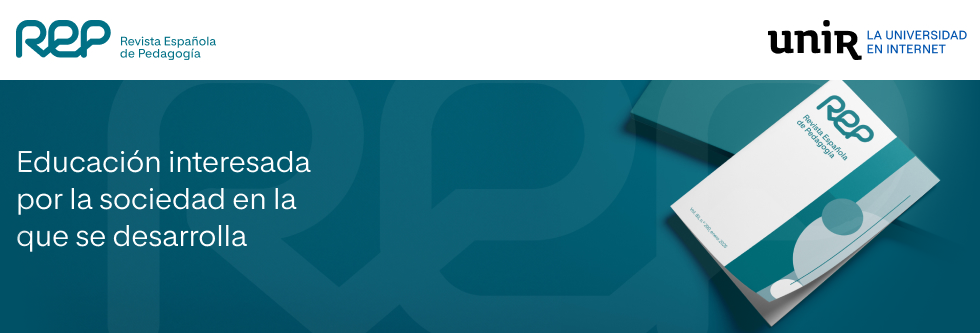

 https://orcid.org/0000-0001-9753-7872
https://orcid.org/0000-0001-9753-7872

